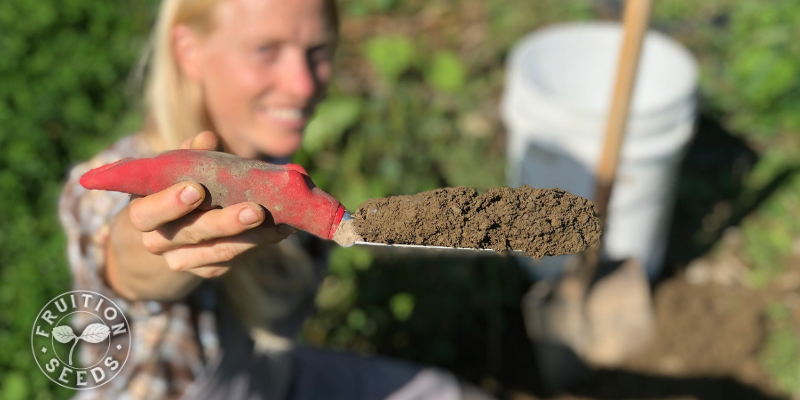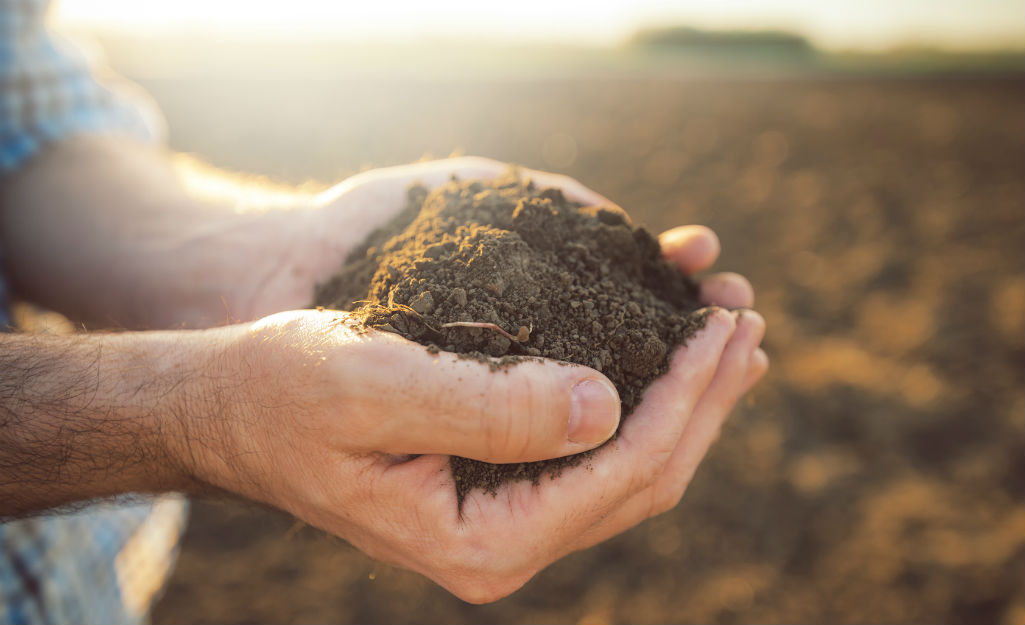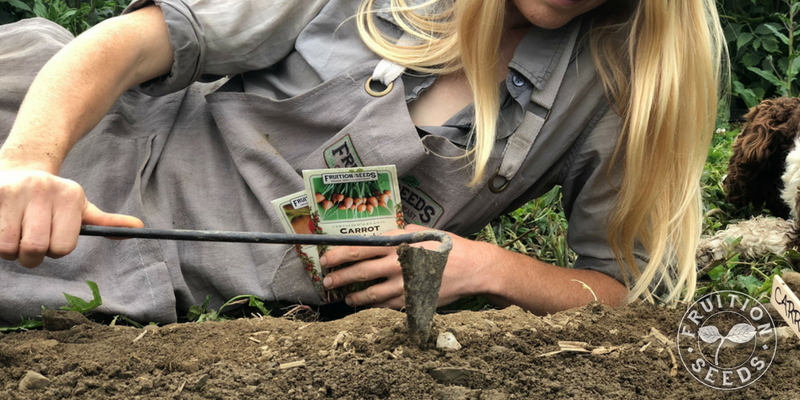It’s true: I used to drag my feet every year before forcing myself to get a soil test.
Over the years, we’ve come to love soil testing as an incredible tool to build our soil, decrease our susceptibility to pest insects and disease as well as increase our yields.
Here’s the way I think about it: If you’re partying on a pontoon boat above the Great Barrier Reef, you’re missing the party.
Grab your snorkel!
And get your soil tested.
Only then will an immensely beautiful and infinitely complex world begin to take shape around you. Your world-view — and your garden — will never be the same.
We’re sending in our soil samples now! If you have 20 minutes and $20, I suspect you’ll find too that soil testing is both easy and endlessly illuminating. It’s one of the simplest ways to ensure you’ll be surrounded by beauty and abundance all season long, for many seasons to come. If you’d love to learn more about soil testing for trees and orchards, hop over here!
I’ll share how, when and why we test our soils, but first:
When I First — Truly — Saw Soil
In 2006, in Tucson, I saw soil for the first time. Inside a conference room, at a Holistic Management conference, we were studying soils that had turned to desert with generations of poor grazing practices. Examining a handful of dry, lifeless dirt from the cracked wasteland, I peered into a microscope. Before my eyes, an unfathomable spectrum of life and color emerged. I’ve had the privilege of snorkling on the Great Barrier Reef and friends, this was remarkably similar: Countless and diverse life forms in every stage between life and death were going about their days. Purple crustacean-y things with six legs. Orange things with a thousand legs. Over and under, eating and procreating, I sat spellbound for many minutes and returned at length at the end of the day.

Billions of living beings are at home in every cup of soil on our planet.
If this was the most dead, lifeless soil I’ve ever seen, I thought, what is beneath my feet in the Finger Lakes? We are just beginning to understand the complexities of soil and the richness of its interconnection. And that soil health is central to the health of all life on Earth.
Our gardens are perhaps the best way to begin.
So, Why Do I Need a Soil Test?
Don’t judge a book by its cover. There are some clues: moss growing means your soil is too acid for optimal vegetable growth. Abundant chickweed means you have excess nitrogen. But in general, the only way to know what nutrients you’re working with is to soil test. A soil test will share your macro-nutrients (Nitrogen, Phosphorus & Potassium, often simply NPK) as well as micro-nutrients (Calcium, Boron and countless others) and offer you suggestions on what to add (how to ‘amend’) your soil so you’ll grow the healthiest crops possible.

There is so much more to see in soil than meets the eye! The more you see it as a living matrix, becoming more engaged in the matrix yourself, the more abundance you’ll harvest. This focus on soil is the essence of organics.
Where do I Get a Soil Test?
For often under $20, the land grant university in your state will test your soil. Here in New York, we send our samples to our Land Grant University: Cornell. Here is a list, state by state, of Land Universities that will test your soil, as well.
How do I Test My Soil?
I remember the first time I walked the field to collect and prepare soil for a soil test; I was nervous and sure I was going to mess it up. How could I possibly get a representative sample of my garden, much less my farm? Friends, with a little experience, soil testing is both easy and fun. Especially because the results are absolutely invaluable.
In addition to my tutorial at the top, Here is a great video from Cornell to walk you through the process. It’s a total of 8 minutes & here are the critical concepts to take away:
- minute 1:22 shares how to dig your sample
- minute 5:12 shares how to prepare your sample
- minute 7:38 shares how to send your sample
Note! Pay no mind to the penetrometer part, as well as the GPS coordinates. (They’re interesting though entirely unnecessary for the home gardener.) And FYI, we never ship our samples with ice packs and we always use standard shipping!

The best time to test your soil is when you’re inspired to make it happen!
When To Get a Soil Test?
We test our soil every year. I recommend you test your soil every year, every three years at the very least. If you do test more than once ever, BRAVO! Here’s the key: Be sure to test in the same time easy season, so the results are as relative and relevant as possible. We always send in our samples in the Fall because:
- it’s easier to manage then, not competing with the spring/summer bustle of planting & succession sowing
- the test results generally come back within 2 weeks (in the spring it’s 4 to 6 weeks, because everyone just remembered to test their soil & the labs are booked)
- with the results in our hands by November and we have months to plan for the season ahead
There are fewer investments of time and money that will better serve you in the short-term or long-term! Your results will include a detailed analysis to surround you with abundance in the seasons to come.
Sow Seeds & Sing Songs,

and the Many Beings of Fruition
ps
Everything you harvest is a reflection of the soil it’s grown in, so dig in, don’t be daunted & know we’re here to join you on the journey!


Good stuff-thank you
Thank you for giving me all of the information I need to send in my soil sample. You have made it so easy for me! It is my first time doing this and I am looking forward to improving my garden. I can’t wait until next season!
Petra, thank you so much for sending out your emails full of “gentle reminders”, gift-wrapped in all the knowledge we could possibly need to carry out the task at hand. Fall arrives with a whole different sort of “busy” and your emails truly help keep me on track. Of course doing our soil test in September makes wonderful sense, yet so often many of us forget until spring and then must make a mad dash to hastily remedy whatever shortcomings may arise when the results come in. I’m so glad I found Fruition! Where would I be without you generously sharing your knowledge and providing so many of us with truly wonderful seeds, which when combined keep our hands and minds busy and our gardens and hearts full. You are much appreciated!
Thank you Sara for the kind message. I’ve passed it on to Petra and we’re just so grateful to be in community with you -Sylvia and the rest of the Fruition Crew
Hi Petra, I had a surprisingly good crop of Russian Fingerlings from you. But I dug them too late and they were chomped by some critter with good incisors!
I am wondering about planting a larger potato that would speed up the cleaning process – do you have a recommendation?
Thanks,
Barbara
Hi Barbara, So sorry to hear your potato’s were enjoyed by critters. You can find our potato varieties here. I would recommend German Butterball and Huckleberry.